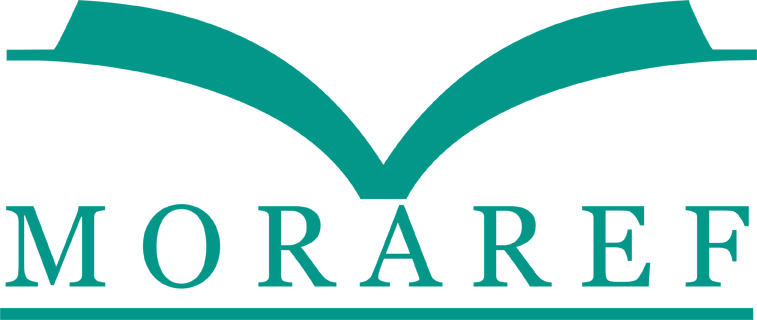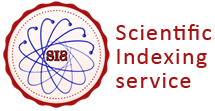Neutrophil-to-Lymphocyte Ratio (NLR) as An Inflammation Degree Marker in Tongue Cancer Patient
Abstract
Tongue cancer is one of the most common malignancies of all oral malignancies. Cancer staging is induced by a systemic inflammatory response with one of the markers, one of them is neutrophil-lymphocyte ratio (NLR). This study aims to provide an overview of the NLR as a marker of the degree of inflammation in patients with tongue cancer. This systematic literature review was conducted online from January 2021 to March 2021 against articles reporting RNL as a marker of inflammatory action in patients with tongue cancer. The search for articles referred to Preferred Reporting Items for Systematic Review and Meta-analysis (PRISMA) and conducted through PubMed, PMC, ScienceDirect, and EBSCOhost with the publication year 2015-2020. Selected articles met the criteria according to the PICO framework (Population, Intervention, Comparison, Outcome). Article screening is done by reading the title and abstract, checking for duplication, and reading the entire text. Sixteen in 841 research articles with observational study design were identified, the NLR cut-off value ranges from 2.04-2.95. Nine in ten research articles suggested a relationship between the NLR value and several clinicopathological characteristics of the patient. Twelve articles mentioned that there was the association of RNL with patient overall survival (OS), disease-free survival (DFS), and disease-specific survival (DSS). The NLR value can be an indicator of the degree of inflammation in patients with tongue cancer as assessed from the parameters of the clinicopathological assessment and can be a predictive factor for patient's prognosis or survival status.
Keywords
Full Text:
PDFReferences
H. S. Witadiana, N. Nur, and I. S. Wahyuni, “Tingkat pengetahuan dan sumber informasi mengenai lesi ulserasi mulut pada siswa sekolah dasar,” vol. 4, no. April, pp. 27–35, 2020, doi: 10.24198/pjdrs.v3i2.
J. Ferlay et al., “Cancer incidence and mortality worldwide: Sources, methods and major patterns in GLOBOCAN 2012,” Int. J. Cancer, vol. 136, no. 5, pp. E359–E386, 2015, doi: 10.1002/ijc.29210.
M. Kanaco, V. Pontoh, and H. Sunaryo, “Pola tumor rongga mulut di Rsup Prof.Dr.R.D Kandou Manado periode 2014-2016,” eCl, vol. 4, no. 2, pp. 1–5, 2016, doi: 10.35790/ecl.4.2.2016.14474.
D. N. Suharto, “Analisis Kasus Kanker Lidah Dalam Konteks Asuhan Keperawatan Dengan Pendekatan Comfort Theory Model,” Poltekita J. Ilmu Kesehat., vol. 12, no. 2, pp. 88–94, 2018.
M. Düzlü et al., “The Demographics and Histopathological Features of Oral Cavity Cancers in Turkey,” Turkish J. Med. Sci., vol. 46, no. 6, pp. 1672–1676, 2016, doi: 10.3906/sag-1510-97.
K. Dhanuthai et al., “Oral cancer: A multicenter study,” Med. Oral Patol. Oral y Cir. Bucal, vol. 23, no. 1, pp. e23–e29, 2018, doi: 10.4317/medoral.21999.
K. Zielińska, K. Kwasniak, J. Tabarkiewicz, and B. Karczmarek-Borowska, “The role of pro-inflammatory cytokines in the pathogenesis and progression of neoplasms,” Postepy Hig. Med. Dosw., vol. 72, no. November, pp. 896–905, 2018, doi: 10.5604/01.3001.0012.6931.
A. Ummaimah, A. Efrida, and Z. Syahrul, “Hubungan Rasio Neutrofil – Limfosit Dengan Skor Sequential Organ Failure Assesment Pada Pasien Sepsis Di Intensive Care Unit RSUP Dr. M. Djamil Padang,” J. Kesehat. Andalas, vol. 9, no. 1S, pp. 16–21, 2020, doi: 10.25077/jka.v9i1s.1150.
P. Forget, C. Khalifa, J. P. Defour, D. Latinne, M. C. Van Pel, and M. De Kock, “What is the normal value of the neutrophil-to-lymphocyte ratio?,” BMC Res. Notes, vol. 10, no. 1, pp. 1–4, 2017, doi: 10.1186/s13104-016-2335-5.
X. Yin, Y. Xiao, F. Li, S. Qi, Z. Yin, and J. Gao, “Prognostic role of neutrophil-to-lymphocyte ratio in prostate cancer: A systematic review and meta-analysis,” Med. (United States) Syst. Rev. Meta-Analysis, vol. 95, no. 3, pp. 1–8, 2016, doi: 10.1097/MD.0000000000002544.
B. D. Lin and J. Hottenga, “Causes of variation in the neutrophil – lymphocyte and platelet – lymphocyte ratios : a twin-family study,” Biomark. Med., vol. 10, no. 10, pp. 1061–1072, 2016.
C. N. Wu, H. C. Chuang, Y. T. Lin, F. M. Fang, S. H. Li, and C. Y. Chien, “Prognosis of neutrophil-to-lymphocyte ratio in clinical early-stage tongue (cT1/T2N0) cancer,” Onco. Targets. Ther., vol. 10, pp. 3917–3924, 2017, doi: 10.2147/OTT.S140800.
X. Liu, Y. Shen, H. Wang, Q. Ge, A. Fei, and S. Pan, “Prognostic Significance of Neutrophil-to-Lymphocyte Ratio in Patients with Sepsis: A Prospective Observational Study,” Mediators Inflamm., vol. 2016, pp. 1–8, 2016, doi: 10.1155/2016/8191254.
O. D. Kartika, B. Purwanto, and Y. A. Dewi, “Neutrophil to Lymphocyte Ratio within Clinical Staging of Head and Neck Squamous Cell Carcinoma,” Althea Med. J., vol. 6, no. 4, pp. 176–180, 2019, doi: 10.15850/amj.v6n4.1688.
S. Dependence and J. F. Size, “Updating Guidance for Systematic Reviews: Development of The PRISMA 2020 Statement,” Prism. 2020 Dev., vol. 15, no. 4, pp. 357–376, 2020.
C. Rivera, “Essentials of oral cancer,” Int. J. Clin. Exp. Pathol., vol. 8, no. 9, pp. 11884–11894, 2015.
A. Korniluk, O. Koper, H. Kemona, and V. Dymicka-Piekarska, “From inflammation to cancer,” Ir. J. Med. Sci., vol. 186, no. 1, pp. 57–62, 2017, doi: 10.1007/s11845-016-1464-0.
M. Murata, “Inflammation and cancer,” Environ. Health Prev. Med., vol. 23, no. 1, pp. 1–8, 2018, doi: 10.1186/s12199-018-0740-1.
R. G. S. Phulari, R. S. Rathore, A. K. Shah, and S. S. Agnani, “Neutrophil: Lymphocyte ratio and oral squamous cell carcinoma: A preliminary study,” J. oral Maxillofac. Pathol., vol. 21, no. 3, pp. 244–51, 2017, doi: 10.4103/jomfp.JOMFP.
S. Rachidi, K. Wallace, J. M. Wrangle, T. A. Day, A. J. Alberg, and Z. Li, “Neutrophil-to-lymphocyte ratio and overall survival in all sites of head and neck squamous cell carcinoma,” Head Neck, vol. 176, no. 1, pp. 139–148, 2016, doi: 10.1002/hed.24159.Neutrophil-to-lymphocyte.
Y. M. Park et al., “A prognostic scoring system using inflammatory response biomarkers in oral cavity squamous cell carcinoma patients who underwent surgery-based treatment,” Acta Otolaryngol., vol. 138, no. 4, pp. 422–427, 2018, doi: 10.1080/00016489.2017.1404640.
T. Hasegawa et al., “Neutrophil-lymphocyte ratio associated with poor prognosis in oral cancer: A retrospective study,” BMC Cancer, vol. 20, no. 1, pp. 1–9, 2020, doi: 10.1186/s12885-020-07063-1.
H. K. Kao et al., “Nomogram based on albumin and neutrophil-to-lymphocyte ratio for predicting the prognosis of patients with oral cavity squamous cell carcinoma,” Sci. Rep., vol. 8, no. 1, pp. 1–9, 2018, doi: 10.1038/s41598-018-31498-z.
V. Abbate et al., “Pre-treatment Neutrophil-to-Lymphocyte Ratio as a predictor for occult cervical metastasis in early stage (T1-T2 cN0) squamous cell carcinoma of the oral tongue,” Surg. Oncol., vol. 27, no. 3, pp. 503–507, 2018, doi: 10.1016/j.suronc.2018.06.002.
H. Nakashima et al., “Pre-treatment neutrophil to lymphocyte ratio predicts the chemoradiotherapy outcome and survival in patients with oral squamous cell carcinoma: A retrospective study,” BMC Cancer, vol. 16, no. 1, pp. 1–9, 2016, doi: 10.1186/s12885-016-2079-6.
S. Lee, D. W. Kim, S. Kwon, H. J. Kim, I. H. Cha, and W. Nam, “Prognostic value of systemic inflammatory markers for oral cancer patients based on the 8th edition of AJCC staging system,” Sci. Rep., vol. 10, no. 1, pp. 1–9, 2020, doi: 10.1038/s41598-020-68991-3.
B. Zhang, W. Du, K. Gan, Q. Fang, and X. Zhang, “Significance of the neutrophil-to-lymphocyte ratio in young patients with oral squamous cell carcinoma,” Cancer Manag. Res., vol. 11, pp. 7597–7603, 2019, doi: 10.2147/CMAR.S211847.
P. Diao et al., “Preoperative systemic immune-inflammation index predicts prognosis of patients with oral squamous cell carcinoma after curative resection,” J. Transl. Med., vol. 16, no. 1, pp. 1–12, 2018, doi: 10.1186/s12967-018-1742-x.
J. N. Morey, I. A. Boggero, A. B. Scott, and S. C. Segerstorm, “Current Directions in Stress and Human Immune Function,” Curr. Opin. Psychol., vol. 5, no. 13–17, 2015, doi: 10.1016/j.copsyc.2015.03.007.Current.
D. Mattavelli et al., “Prognostic nomograms in oral squamous cell carcinoma: The negative impact of low neutrophil to lymphocyte ratio,” Front. Oncol., vol. 9, no. APR, pp. 1–13, 2019, doi: 10.3389/fonc.2019.00339.
Z. Lu et al., “Nomogram Based on Systemic Immune-Inflammation Index to Predict Survival of Tongue Cancer Patients Who Underwent Cervical Dissection,” Front. Oncol., vol. 10, no. March, pp. 1–11, 2020, doi: 10.3389/fonc.2020.00341.
S. Bobdey, B. Ganesh, P. Mishra, and A. Jain, “Role of Monocyte Count and Neutrophil-to-Lymphocyte Ratio in Survival of Oral Cancer Patients,” Int. Arch. Otorhinolaryngol., vol. 21, no. 1, pp. 21–27, 2017, doi: 10.1055/s-0036-1587318.
H. S. Ong, S. Gokavarapu, L. Z. Wang, Z. Tian, and C. P. Zhang, “Low Pretreatment Lymphocyte-Monocyte Ratio and High Platelet-Lymphocyte Ratio Indicate Poor Cancer Outcome in Early Tongue Cancer,” J. Oral Maxillofac. Surg., vol. 75, no. 8, pp. 1762–1774, 2017, doi: 10.1016/j.joms.2016.12.023.
J. Shan et al., “Machine Learning Predicts Lymph Node Metastasis in Early-Stage Oral Tongue Squamous Cell Carcinoma,” J. Oral Maxillofac. Surg., vol. 78, no. 12, pp. 2208–2218, 2020, doi: 10.1016/j.joms.2020.06.015.
R. M. Widhyasih, S. D. Rahmadhanti, and R. Fajrunni’mah, “Carcinoembryonic Antigen (CEA) dan Neutrofil-to-Limfosit Ratio (NLR) sebagai Faktor Prediktif Kanker Kolorektal,” J. Ilmu dan Teknol. Kesehat., vol. 7, no. 1, pp. 68–76, 2019, doi: 10.32668/jitek.v7i1.223.
Y. Gao et al., “Neutrophil/lymphocyte ratio is a more sensitive systemic inflammatory response biomarker than platelet/lymphocyte ratio in the prognosis evaluation of unresectable pancreatic cancer,” Oncotarget, vol. 8, no. 51, pp. 88835–88844, 2017, doi: 10.18632/oncotarget.21340.
Y. Li et al., “Risk factors analysis of pathologically confirmed cervical lymph nodes metastasis in oral squamous cell carcinoma patients with clinically negative cervical lymph node: Results from a cancer center of central China,” J. Cancer, vol. 10, no. 13, pp. 3062–3069, 2019, doi: 10.7150/jca.30502.
A. Almangush et al., “Staging and grading of oral squamous cell carcinoma: An update,” Oral Oncol., vol. 107, no. 104799, 2020, doi: 10.1016/j.oraloncology.2020.104799.
Y. Choi et al., “Systemic inflammation is associated with the density of immune cells in the tumor microenvironment of gastric cancer,” Gastric Cancer, vol. 20, no. 4, pp. 602–611, 2017, doi: 10.1007/s10120-016-0642-0.
DOI: https://doi.org/10.31983/jkg.v8i2.7024
Article Metrics
Refbacks
- There are currently no refbacks.
| View My Stats |











.png)


.png)
.png)








